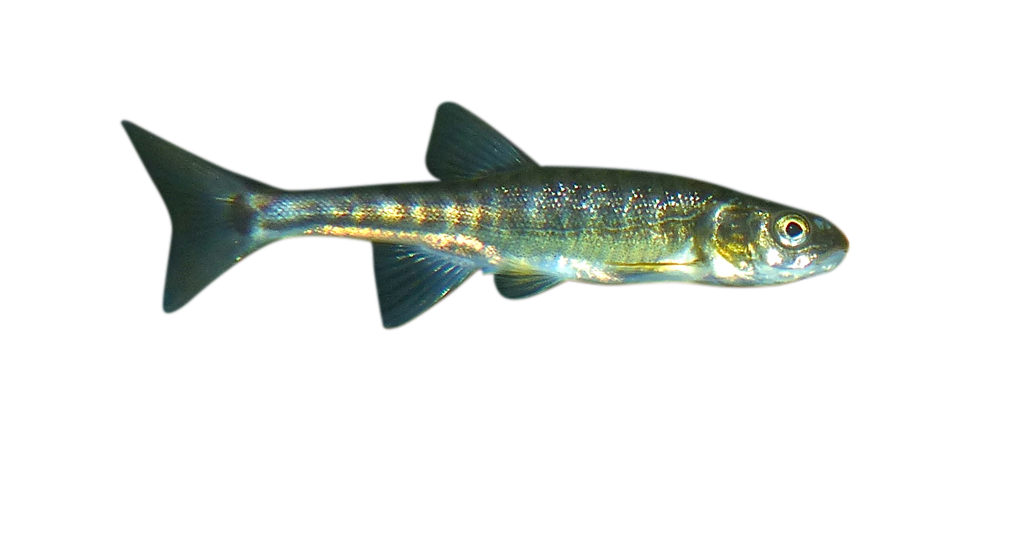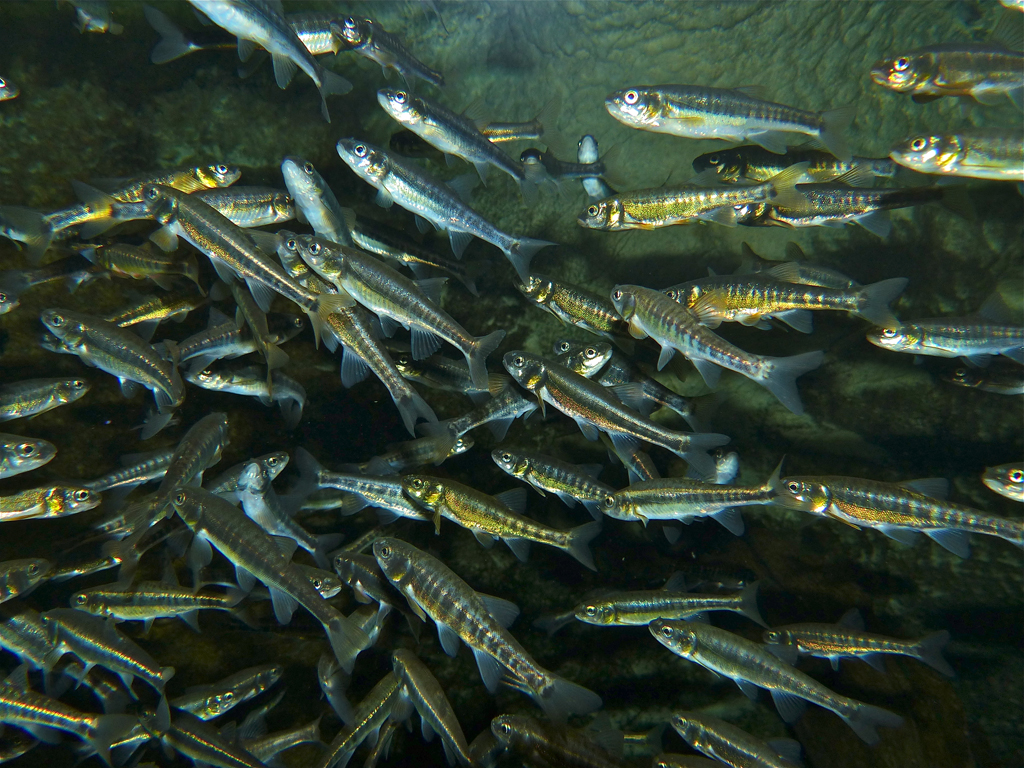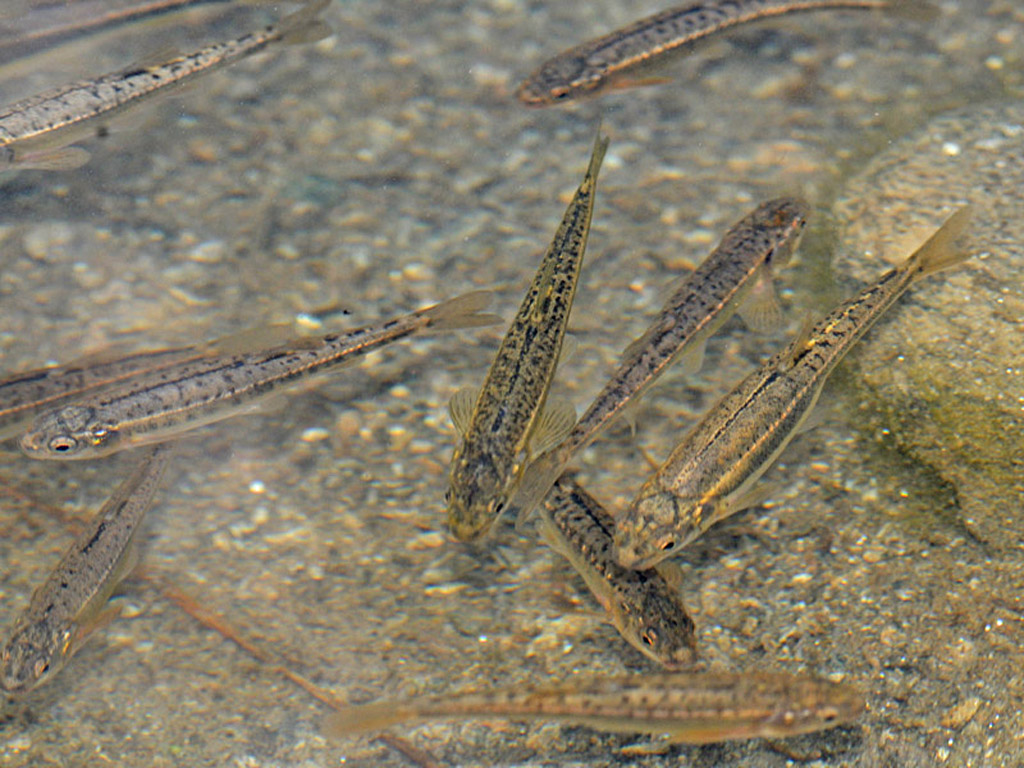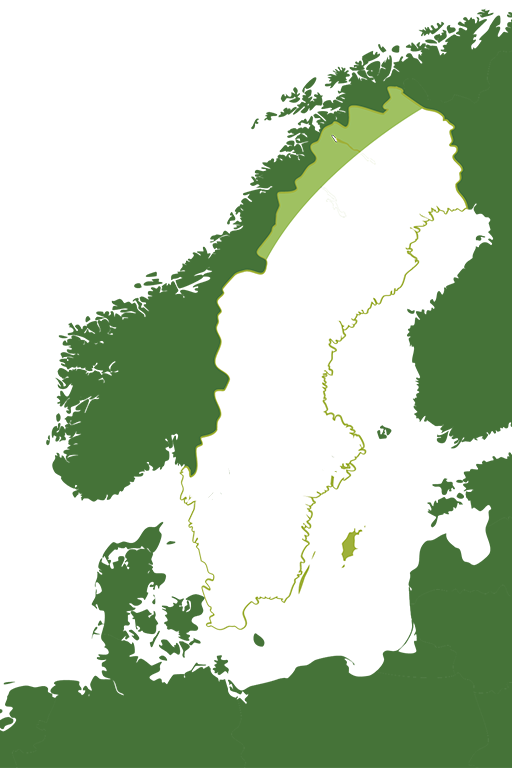Common Minnow
Phoxinus phoxinus

Warns with scents and investigates predators
Minnows like to live in shoals, with fish of the same species and other small fish, and with the fry of larger fish. If a minnow is injured or dies, it releases a scent into the water that warns the other minnows that something dangerous is nearby. They then hurry to form larger and denser shoals, to better protect themselves from potential predators.
A group of minnows spotting something dangerous – perhaps a pike – may send out scouts to study the danger. The scouts try to determine whether the pike is about to attack or not. If it appears to be a threat, the minnows may go into the same defensive mode as they would from the scent of injured minnows. Groups of minnows living in waters with many predators learn to switch between defence and calm more quickly than minnows in calmer waters can.

Photo: Bernard-Dupont-CC-BY-NC-SA
Bright red during mating season
During the spawning season the male develops a special spawning array (appearance). He develops white warts on his head and becomes bright red on his stomach and the The common minnow may look a little colourless, but appearances can be deceiving!
In spring and early summer, when it is time to spawn, the males’ colouring resembles that of an Arctic char. It has a bright red belly, green sides, and an almost black back. White bumps, called spawning warts, appear on the face. The male chases the female, rubbing his side against hers. It can get pretty aggressive. Eventually, the female lays her eggs, which stick to rocks on the bottom, and the male fertilises the eggs with his sperm.

Photo: Etrusko25-CC-BY-SA
Sensitive to environmental changes
The minnow thrives best in clear, cold water, usually in streams and rivers but also in lakes or brackish coastal waters. They are sensitive to acidification and have therefore declined in numbers in the past due to environmental damage. But because the minnows are good at migrating in watercourses, they have also been able to return to places from which they had previously disappeared.
Distribution in Sweden

All of Sweden except the northern mountain region.
White marking = Distribution
Threat based on the Red List

Trade regulations
CITES: Not listed.